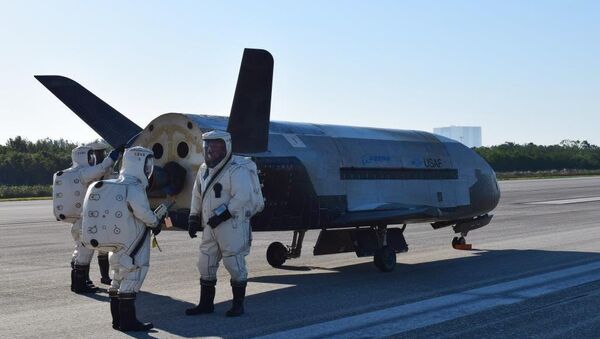The reusable spacecraft, which looks like a miniature version of NASA's space shuttle, is on a mission that has been a topic of speculation since its start on September 7, 2017, as the solar-powered spacecraft's missions, and most of its payloads, remain classified. The US Air Force keeps stressing that the space plane tests technologies for future reusable spacecraft and takes experiments up to space and back.
Air Force officials, however, have revealed that its payloads include the Advanced Structurally Embedded Thermal Spreader experiment (ASETS-II), which is measuring how oscillating heat pipes and certain electronics perform in the space environment.
USAF currently possesses at least two X-37B vehicles, both of which were built by Boeing. Each space plane is 8.8 meters long and 2.9 m tall, with a wingspan of almost 4.6 m and a payload bay the size of a pickup-truck bed. Like the space shuttle, the X-37B launches vertically and lands on a runway like a plane.
The X-37B missions have been in use since 2010, with the first mission (OTV-1) starting in April and ending in December after 224 days in space. OTV-2 lasted from March 2011 through June 2012, racking up 468 days of orbital flight. The 675-day OTV-3 mission launched in December 2012 and landed in October 2014, and OTV-4 wrapped up in May 2017 after 718 days. As each mission is longer than the previous one, there is a good chance that OTV-5 will remain in orbit after surpassing the record in 19 days.




